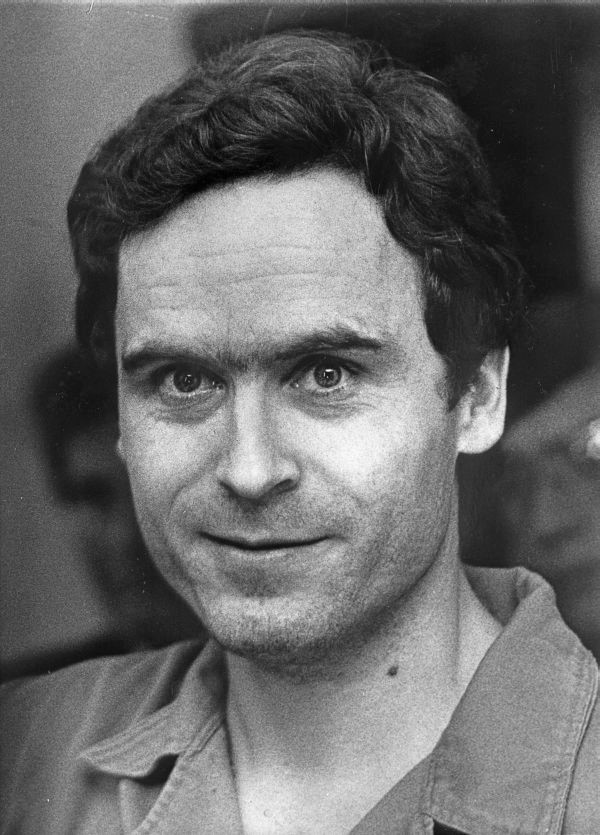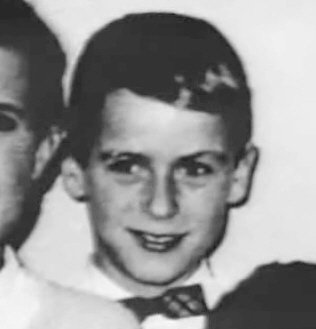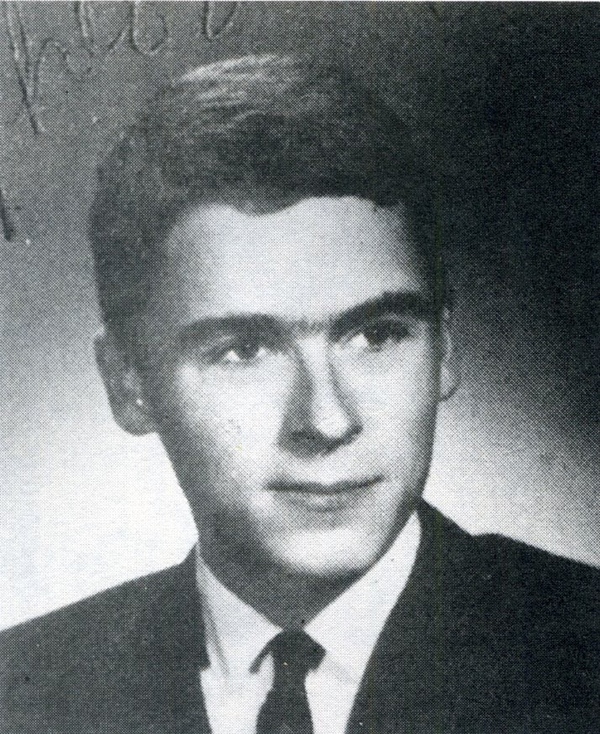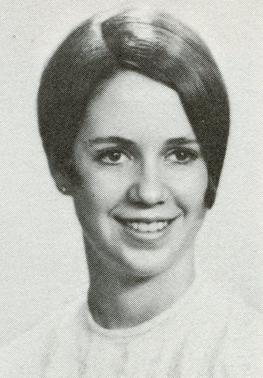
1946 - 1989
Ted Bundy
Summary
Name:
Years Active:
1974 - 1978Birth:
November 24, 1946Status:
ExecutedClass:
Serial KillerVictims:
20+Method:
Beating with metal bar / StrangulationDeath:
January 24, 1989Nationality:
USA
1946 - 1989
Ted Bundy
Summary: Serial Killer
Name:
Ted BundyStatus:
ExecutedVictims:
20+Method:
Beating with metal bar / StrangulationNationality:
USABirth:
November 24, 1946Death:
January 24, 1989Years Active:
1974 - 1978Date Convicted:
July 24, 1979bio
Ted Bundy was born as Theodore Robert Cowell on November 24, 1946, in Burlington, Vermont. His mother, Eleanor Louise Cowell, gave birth to him at the Elizabeth Lund Home for Unwed Mothers. The identity of his father has never been confirmed. Some records suggest a salesman and Air Force veteran named Lloyd Marshall, while others list his father as unknown. Louise said she met a war veteran named Jack Worthington, who left her after she became pregnant. Some family members suspected that Ted’s grandfather might be his father, but a 2020 documentary claimed that a DNA test proved this wasn't true.
For the first three years, Ted lived in the Roxborough neighborhood of Northeast Philadelphia with his grandparents, Samuel and Eleanor Cowell. To avoid the stigma of being born out of wedlock, Ted was raised by his grandparents as their son, and his mother was said to be his older sister. Ted eventually learned the truth, but his stories about how he found out varied. He told a girlfriend a cousin showed him his birth certificate, but told biographers he found it himself. True crime writer Ann Rule, who knew Ted, said he found out in 1969 when he got his birth record in Vermont. Ted was always angry at his mother for not telling him the truth about his father.
Ted showed strange behavior early on. His aunt, Julia Cowell, recalled waking up from a nap surrounded by knives with Ted smiling at her. Ted spoke warmly about his grandparents in some interviews, but later described his grandfather as a bully who abused his wife, beat animals, and had racist and xenophobic views. Ted's grandmother was described as timid and suffering from depression, undergoing electroconvulsive therapy, and fearing to leave the house.

Recent investigations have questioned these harsh descriptions of Ted’s grandparents. Some locals remembered Samuel Cowell as a good man. Ted's cousin said the negative portrayal of Samuel was a convenient way to explain Ted's behavior. Another relative said their mother couldn't leave the house because of a stroke, not mental illness.
In 1950, Louise changed her surname to Nelson and moved to Tacoma, Washington, with Ted. There, she met and married Johnny Bundy, who adopted Ted. Johnny and Louise had four children, but Ted remained distant from Johnny, saying he wasn't his real father and complaining about his lack of intelligence and money.
Ted's memories of Tacoma varied. He told biographers about roaming the neighborhood looking for pictures of naked women and reading detective magazines. He also talked about peeping into windows at night. Ted's neighbor Sandi Holt described him as a bully who enjoyed frightening people, torturing animals, and setting traps that hurt other kids. She also said he liked to take younger children into the woods and scare them.
Ted's social life stories varied too. He said he was alone because he didn't understand social relationships, but classmates said he was well-known and liked in high school. He loved skiing, often using stolen equipment. He was arrested a few times for burglary and car theft, but his records were cleared when he turned 18.

After high school, Ted went to the University of Puget Sound for a year before transferring to the University of Washington to study Chinese. In 1967, he fell in love with a classmate named Diane Edwards. Ted dropped out of college in early 1968, worked odd jobs, and volunteered for political campaigns. Diane broke up with him later that year, frustrated with his lack of ambition, which deeply affected him.
Ted then traveled around, visiting relatives and attending Temple University for a semester. In 1969, he met Elizabeth Kloepfer, a single mother. Their tumultuous relationship continued for years. Ted went back to the University of Washington in 1970, now focused and doing well. He graduated in 1972 with a degree in psychology and worked on a political campaign, gaining respect for his intelligence and dedication.
In 1973, Ted rekindled his relationship with Diane while also dating Elizabeth. Diane and Ted discussed marriage, but he abruptly ended contact with her in early 1974, telling her he had no idea what she meant when she tried to reach him. He later explained he wanted to prove he could have married her. Diane believed he had planned their relationship to get revenge for her breaking up with him. Around this time, Ted began skipping law school classes and soon stopped attending as young women started disappearing in the Pacific Northwest.
murder story
There isn't a clear answer about when or where Bundy started killing women. He told different stories to different people and never gave details about his first crimes. Even though he described many murders in detail just before his execution, he kept the specifics of his earliest crimes secret. Bundy told Nelson that his first kidnapping attempt was in 1969 in Ocean City, but he didn't kill anyone until 1971 in Seattle. He told a psychologist that he killed two women in Atlantic City in 1969 while visiting family. Bundy hinted to a detective that he committed a murder in Seattle in 1972 and another one in 1973 involving a hitchhiker near Tumwater but didn't provide details. Some people believed he started killing as a teenager. His earliest confirmed murders were in 1974 when he was 27. By that time, he had become skilled at leaving little evidence behind.
Just after midnight on January 4, 1974, around the time Bundy ended his relationship with a woman named Edwards, he entered the basement apartment of Karen Sparks, an 18-year-old dancer and student at the University of Washington. He attacked her with a metal rod from her bed frame and sexually assaulted her with it, causing severe injuries. Sparks was unconscious in the hospital for ten days and survived with permanent brain damage and significant loss to her vision and hearing. On February 1, Bundy broke into the basement room of Lynda Ann Healy, a 21-year-old UW student who gave morning weather reports for skiers on the radio. He beat her unconscious, dressed her, and carried her away. Bundy said he took Healy to a secluded area where he raped and murdered her, then dumped her body.
During the first half of 1974, female college students went missing about once a month. On March 12, 19-year-old Donna Gail Manson, a student at Evergreen State College in Olympia, disappeared on her way to a campus concert. Bundy claimed he burned her skull in his girlfriend's fireplace. On April 17, Susan Elaine Rancourt, 18, disappeared on her way to her dorm room after a meeting at Central Washington State College. Two students reported encounters with a man in a sling asking for help carrying books to his car on the night Rancourt disappeared. On May 6, Roberta Kathleen Parks, 22, disappeared from Oregon State University in Corvallis. Bundy claimed he persuaded her to go to a bar, then tied her up, gagged her, and drove her back to Washington where he killed her. Investigators were concerned as the missing women had little in common apart from being young, attractive, white college students with long hair parted in the middle.
On June 1, Brenda Carol Ball, 22, disappeared after leaving a tavern in Burien near Seattle. She was last seen talking to a man with his arm in a sling. Bundy said he brought Ball back to his residence where they had a sexual encounter before he strangled her. On June 11, Georgann Hawkins, an 18-year-old UW student, vanished while walking between her boyfriend's dormitory and her sorority house. Bundy later told a detective he lured her to his car, knocked her out, handcuffed her, and drove her to Issaquah, where he strangled her and spent the night with her body. The next day, he returned to the scene and retrieved Hawkins's earrings and a shoe without being noticed. Witnesses reported seeing a man on crutches with a leg cast in an alley on the night of Hawkins's disappearance.
During this time, Bundy worked in Olympia at the Seattle Crime Prevention Advisory Commission, where he wrote a pamphlet on rape prevention. He later worked at the Department of Emergency Services, involved in the search for the missing women. There, he met and began dating Carole Ann Boone, who would play a significant role in his later life. Reports of Sparks' attack and the missing women were prominent in the news, spreading fear. The disappearances all occurred at night, often near construction sites, and the victims were usually wearing slacks or jeans. Many witnesses saw a man with a cast or sling driving a brown or tan Volkswagen Beetle.

The spree culminated on July 14 with the abduction of two women from Lake Sammamish State Park. Witnesses described an attractive young man in a white tennis outfit with his arm in a sling, who introduced himself as "Ted" and asked for help unloading a sailboat from his Volkswagen Beetle. One woman went with him but fled when she saw there was no sailboat. Janice Ann Ott, 23, and Denise Marie Naslund, 19, were both taken by Bundy that day. Bundy later said he forced one to watch as he assaulted and murdered the other.
Police distributed fliers with a detailed description of the suspect and his car. People who knew Bundy, including his girlfriend, a colleague, and a psychology professor, reported him as a suspect, but detectives did not consider him likely. On September 6, skeletal remains of Ott and Naslund were found, along with additional bones identified by Bundy as belonging to Hawkins. More remains of other victims were found on Taylor Mountain. Manson's remains were never recovered.
In August 1974, Bundy moved to Salt Lake City for law school, leaving his girlfriend in Seattle. He dated other women and struggled with his law studies. In September, he raped and strangled an unidentified hitchhiker in Idaho, then returned the next day to photograph and dismember the body. In October, he abducted 16-year-old Nancy Wilcox in Holladay, Utah, and later claimed her remains were buried near Capitol Reef National Park, but they were never found. Later in October, Melissa Anne Smith, the 17-year-old daughter of a police chief, disappeared and was found dead nine days later. Another victim, Laura Ann Aime, 17, disappeared on Halloween and was found dead a month later. Both had been beaten, raped, and strangled.
In November, Bundy approached Carol DaRonch at a mall, posing as a police officer. He attempted to abduct her, but she escaped. Later that evening, Debra Jean Kent, 17, disappeared from a school event. Investigators found a key at the school that matched the handcuffs used on DaRonch. Bundy's girlfriend, Elizabeth Kloepfer, continued to suspect him and reported him to the police again. In January 1975, Bundy returned to Seattle, and Kloepfer did not tell him about her suspicions.
Bundy shifted his activities to Colorado, where he murdered Caryn Eileen Campbell in January 1975. He also killed Julie Lyle Cunningham in March and Denise Lynn Oliverson in April. In May, he abducted and killed 12-year-old Lynette Dawn Culver in Idaho. In June, he murdered 15-year-old Susan Curtis. Bundy's Utah crimes brought him to the attention of law enforcement, and in August 1975, he was arrested in Utah, which led to him becoming a suspect in multiple states.

Police found incriminating items in his car and searched his apartment, finding more evidence. His girlfriend, Kloepfer, shared her suspicions with detectives, revealing strange items and behavior. Bundy sold his Volkswagen Beetle, which police impounded and found hair matching three victims. In October, Bundy was identified in a lineup by DaRonch and others, leading to charges of aggravated kidnapping and attempted assault. He was released on bail and monitored by police.
In November, investigators from several states met and shared information, concluding Bundy was their suspect but needing more evidence. In February 1976, Bundy was found guilty of kidnapping and assaulting DaRonch and sentenced to one to 15 years in Utah State Prison. Later, he was charged with Caryn Campbell's murder in Colorado and extradited there in 1977.
Bundy escaped from custody twice. In June 1977, he jumped from a courthouse window in Aspen, Colorado, but was recaptured six days later. In December, he escaped from jail in Glenwood Springs, Colorado, and made his way to Chicago. From there, he traveled to Florida, where he continued his crimes.
In January 1978, Bundy attacked four women at the Chi Omega sorority house at Florida State University, killing two. He then attacked another woman in her apartment, causing severe injuries. In February, he abducted and killed 12-year-old Kimberly Leach. Bundy was arrested again in Pensacola, Florida, in February 1978 after a traffic stop. He was identified and charged with multiple crimes, including the Chi Omega murders and the murder of Kimberly Leach.
Bundy stood trial in Miami for the Chi Omega murders and was found guilty in July 1979. He received death sentences for these crimes. In January 1980, he was convicted of Kimberly Leach's murder and sentenced to death again. Bundy spent years manipulating the legal system to delay his execution, offering vague confessions as leverage. But his efforts failed. On January 24, 1989, after confessing to 30 homicides, he was executed in the electric chair at Florida State Prison.